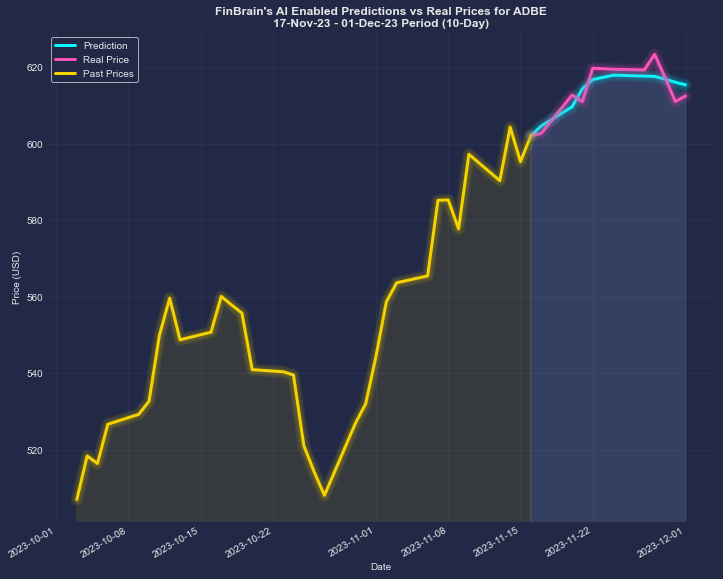1. Understanding the Pricing Model
Subscription: Be sure to check if a platform charges an amount per month or a year, and what’s included in each stage.
Pay-per-use: Find out if the platform charges depending on the amount of usage (e.g. the amount of data requests, trades, or predictions).
Freemium model: Check whether the platform has an unpaid tier that has limitations on features and fees for premium features.
2. Compare Pricing Tiers
Check out the features included in each price tier.
Scalability – Make sure your pricing tiers are compatible with your needs.
Upgrade flexibility – Examine for options to easily upgrade your plan or downgrade it as your needs may change.
3. Evaluate Hidden Costs
Data charges are a matter of fact. Find out if you have to pay extra for access to premium data.
Brokerage fees: Find out if there are any additional costs for the platform to connect with brokers or execute trades.
API usage: Assess whether there are any additional charges to access APIs or for high-frequency API use.
4. Demos as well as Free Trials
Trial period: Search for platforms that provide the opportunity for a free trial or demo to test their features prior to committing.
Trial limitations: Determine whether you can utilize all the features of the trial or just the trial’s features in a limited amount.
Options with no commitment: You should be able to cancel your trial without incurring any fees if you feel that the software does not meet your needs.
5. Check for Discounts and Promotions
Discounts on annual plans: Check whether there are any specials provided by the platform in comparison to the monthly plans they offer.
Referral programs – Check to see whether there are any discount or credits for referring new users.
Request pricing for institutional customers when you belong to a large organization.
6. Calculate Return on Investment
Cost is not the same as. value: Determine if the capabilities and features of the platform are worth the price. Are you able to save time or make better decisions when trading?
Performance track record – Research the platform’s success rates or user testimonials for an indication of the potential return on investment.
Alternative costs: Compare platform costs with the cost of not using the platform (e.g. missed opportunities, time spent manually analyzing).
Review Refund and Cancellation Policies
Terms of cancellation: Be sure you’re able cancel without any hidden fees or penalties.
Make sure to check if there’s a refund policy for subscriptions you’ve not utilized.
Auto-renewal : Find out whether your subscription is auto renewed by the platform. If so, learn how to opt out.
8. Transparency in pricing is crucial.
Clear pricing page: Make sure that the platform offers a pricing page which is precise, clear and does not contain any hidden fees.
Customer Support: Contact customer service for clarification on any unclear pricing information or additional charges.
Contract Terms: Understand the long-term obligations and penalties by reading the contract’s terms.
9. Compare with Competitors
Compare features and prices of various platforms to find the most value.
User reviews: Look at the feedback of users to determine whether the cost of the platform is a good value.
Market positioning: Find out whether your platform is advertised as a mid-tier, budget or premium choice. Additionally, determine if the cost is comparable to your expectations.
10. Calculate Long-Term Costs
Price increases: Look at the history of the platform in the past and observe how often it increases prices.
Additions to features – Check if new features are included in your current plan or if a change is required.
Scalability cost The platform must be priced reasonably in the event that your trading or data requirements increase.
Bonus Tips
Free trials of different platforms are available to try and compare the advantages and performance of different platforms.
Offer prices to negotiate: If have many customers or are part of an organization, you can ask for special pricing and discounts.
There are many platforms that offer educational resources and tools for no cost.
Follow these tips and you’ll be able to evaluate the cost, pricing and features of AI platform for trading stocks. A reasonable price for a platform should be able balance the affordability of the platform with its performance. This will help you achieve maximum trading success. See the top read full report for copyright financial advisor for website advice including ai options trading, copyright financial advisor, ai trading tools, ai investment platform, best ai stock, copyright financial advisor, copyright advisor, ai stock market, ai stocks, stock analysis app and more.

Top 10 Tips For Evaluating Regulatory Compliance With Ai Stock Predicting/Analyzing Trading Platforms
The regulatory compliance of trading platforms that use AI to analyze or predict stock prices is an important factor. Compliance ensures that the platform works within the legal frameworks, safeguards user data, and adheres to financial regulations, which reduces the risk of legal issues or financial sanctions. These are the top ten tips for assessing regulatory compliance.
1. Verify Registration and License
The regulatory bodies: Make sure that the platform is licensed and registered by the appropriate financial regulatory authority (e.g. SEC, FCA, ASIC, etc.) in your country.
Broker partnership: Ensure that the brokers who are integrated into the platform are licensed.
Public records: Go to the regulator’s website to see the status of registration, as well as past violations.
2. Measure Data Privacy Compliance
GDPR: If you operate or serving users within the EU Make sure that the platform complies with the General Data Protection Regulation (GDPR).
CCPA for Californians be sure to check the compliance of California Consumer Privacy Act.
Policies on handling data: Review the policy on data privacy of the platform to ensure it outlines the ways in which user data is gathered, stored, and shared.
3. Evaluation of Anti-Money Laundering/AML measures
AML Policies: Make sure the platform has AML policies that are able to stop and detect money laundering.
KYC Procedures: Check if the platform has procedures in place to confirm users’ identities.
Monitor transactions: Determine whether the platform monitors transactions for suspicious activities, and then reports it to the appropriate authorities.
4. Check to see if you are in compliance with Trading Regulations
Market manipulation: Make sure that the platform has measures in place to protect against manipulating the market, like spoofing or wash trading.
Order types: Confirm that the platform is in compliance with regulations regarding order types (e.g., no illegal stop-loss hunting).
Best execution : Make sure that the platform uses best execution techniques to complete trades at a competitive cost.
5. Cybersecurity Compliance:
Data encryption: Ensure the platform has encryption in place to protect your personal information while it is in transit as well as in rest.
Incident response: Verify that the platform has an incident response plan in place for cyber-attacks and data breaches.
Certifications: Determine if the platform holds cybersecurity certifications (e.g., ISO 27001, SOC 2).
6. Transparency and disclosure A Study
Fee disclosure: Make sure that the platform has clearly disclosed all fees including hidden charges or additional costs.
Risk disclosure: Make sure the platform has disclosed all risks, particularly in the case of high-risk strategies or trading using leverage.
Performance reporting: Find out if the platform provides precise and transparent performance reports for its AI models.
7. Check for Compliance with International Regulations
Cross-border trading: If your trading is international, you should make sure that the platform you use meets all regulatory requirements in each jurisdiction.
Tax reporting: Check if the platform offers tools or reports to assist users adhere to tax regulations.
Sanctions compliance: Ensure that the platform is compliant with international sanctions and does permit trading only with nations or entities banned.
8. Assess Record-Keeping and Audit Trails
Transaction records: For compliance and auditing purposes, ensure that the platform maintains full logs of each transaction.
Logs of user activity Make sure your platform keeps track of all activities by users, including transactions, logins, and account settings changes.
Audit readiness: Ensure that the platform is able to provide all documents and logs in the event of a regulatory audit occurs.
9. Evaluate Compliance with AI-Specific Regulations
Algorithmic rules of trading: If the platform permits algorithmic trading, it must be in compliance with European regulations, such as MiFID II and U.S. Reg SCI.
Fairness and bias: Check whether the platform is able to monitor and corrects biases within its AI models to ensure fair and ethical trading.
Explainability: As required by certain regulations, the platform must provide clear explanations of AI-driven decisions and forecasts.
10. Review User Comments and Historical Regulatory The History
User reviews: Conduct user research to evaluate the platform’s reputation in terms of legal conformance.
Review the history of regulations to determine if there have been penalties or fines for violation of the regulations.
Third-party checks: Check the platform’s compliance with the law by checking whether it is subject to regular audits by third parties.
Bonus Tips:
Legal consultation: Talk to an attorney to make sure that the platform meets the relevant laws.
Trial period: Test the platform free of charge or utilize the demo feature to test the compliance features as well as the documentation.
Customer support: Check whether the platform is able to provide assistance to customers who have issues or concerns relating to compliance.
The following tips can assist you assess the compliance with regulations for an AI stock-predicting/analyzing trading platform. You will be able choose a system that is in compliance with the legal frameworks, while also protecting your security. Compliance reduces legal risk and improves confidence on the platform. Take a look at the top rated ai options trading for blog tips including ai stocks to invest in, trader ai review, best stock analysis website, ai stock price prediction, ai stocks to invest in, ai stock picks, trading chart ai, coincheckup, ai for investing, ai stock picks and more.
